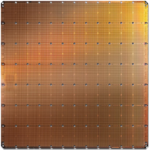You are currently viewing SemiWiki as a guest which gives you limited access to the site. To view blog comments and experience other SemiWiki features you must be a registered member. Registration is fast, simple, and absolutely free so please,
join our community today!
Synopsys has released a Technical Bulletin entitled “Parallel-Based PHY IP for Die-to-Die Connectivity”. The piece is authored by Manuel Mota, senior product marketing manager, staff at Synopsys. Manuel has worked at Synopsys for 11 years in the IP area. Prior to that, he worked at MIPS Technologies, Chipidea (acquired… Read More
There’s a lot to keep you awake at night these days. If you live in California, it’s wildfires and unbreathable air. If you live on planet Earth, it’s COVID-19. And if you’re part of the value chain for IoT, it’s the security and robustness of the silicon and software fabric that connects our world. This fabric connects everything,… Read More
We all know the signal integrity and power integrity challenges of high-performance system design. It used to be enough to design a robust chip. Now, the interaction between the chip, the substrate/package and the PCB all matter. If your design is 2.5D, as many are these days, the problems just gets worse. Chiplets are becoming… Read More
Last month, I discussed a webinar about HCL VersionVault – HCL VersionVault Delivers Version Control and More. This webinar introduced the HCL VersionVault product. This post will discuss a new video entitled “How HCL VersionVault Works – Directory Versioning.”
To recap, VersionVault delivers a lot of … Read More
This is another installment covering TSMC’s very popular Open Innovation Platform event (OIP), held on August 25. This event presents a diverse and high-impact series of presentations describing how TSMC’s vast ecosystem collaborates with each other and with TSMC. The talk covered here focuses on a complete on-die clock … Read More
TSMC held their very popular Open Innovation Platform event (OIP) on August 25. The event was virtual of course and was packed with great presentations from TSMC’s vast ecosystem. One very interesting and relevant presentation was from Dolphin Design, discussing the delivery of high-performance audio processing using TSMC’s… Read More
This is another installment covering TSMC’s very popular Open Innovation Platform event (OIP), held on August 25. This event presents a diverse and high-impact series of presentations describing how TSMC’s vast ecosystem collaborates with each other and with TSMC. This presentation is from Alchip, presented by James Huang,… Read More
This is another installment covering TSMC’s very popular Open Innovation Platform event (OIP), held on August 25. This event presents a diverse and high-impact series of presentations describing how TSMC’s vast ecosystem collaborates with each other and with TSMC. The topic at hand was full of superlatives, which isn’t surprising… Read More
FPGAs are a popular method to implement hardware accelerators for applications such as AI/ML, SmartNICs and storage acceleration. PCIe Gen5 is a high bandwidth communication protocol that is a key enabler for this class of applications. Putting all this together presents significant demands on the FPGA for performance and … Read More
Did you know you can save 30% to 60% power without spending a fortune on a process migration? There is a better way than moving to deeply scaled nodes for power. Read on…
Have you heard of AGGIOS? You will. The name stands for AGGregated IO Systems, and a team of ex ARM and Qualcomm engineers are re-inventing power management. I’ll explain… Read More



















The Quantum Threat: Why Industrial Control Systems Must Be Ready and How PQShield Is Leading the Defense